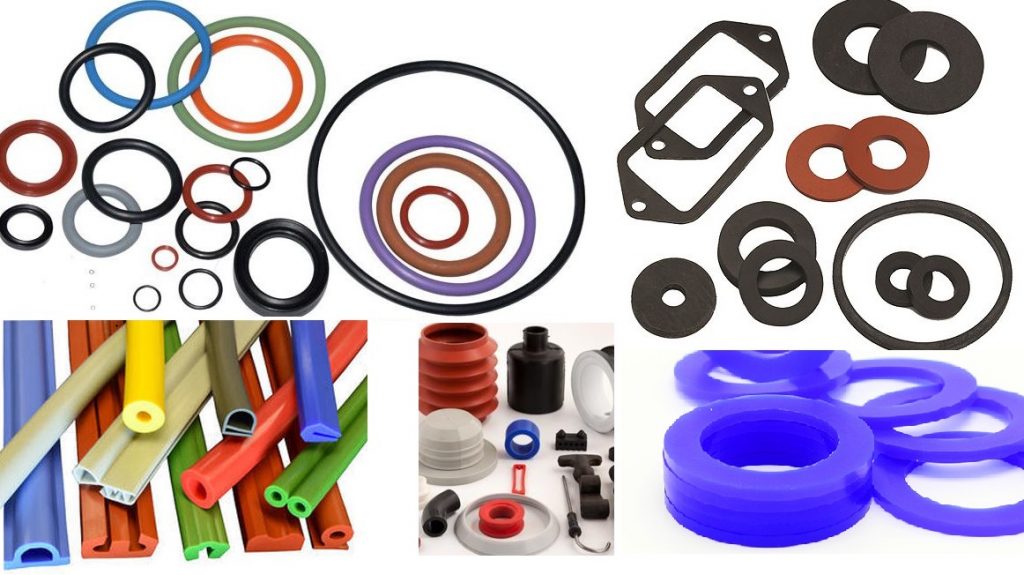Acids and oils course like water through wide channels. And although the compounds aren’t as toxic as those found interred inside chemical processing plants, that doesn’t mean they can’t eat their way through a rubber gasket. That’s why the food industry can’t operate for long without food-grade gaskets. Anything less, well, those corrosive fluids will eventually eat away their material bases.
Some rubbers deteriorate when they’re exposed to acids. Other materials, break down when heavy oils are present. Granted, the fluids here are mildly acidic, and those oily fluids are nothing more than animal fat or vegetable oil. Still, in food-grade applications, those seals are exposed to acids and oils 24/7, all year round. The liquefied foodstuff could also be hot or chilled, so the selected food-grade gasket better provide plenty of chemical resistance strength.
Food-grade gaskets play a vital role in consumer safety, helping to maintain the sterility of consumable products. Manufacturers typically utilize these gaskets across a wide range of food-production applications to prevent contamination.

Fig. No: 01
What Makes a Gasket Food Grade/Food Safe?
Food-grade gaskets feature several characteristics that make them suitable for food processing and other applications in the food and beverage industry. These factors include:
- The ability to withstand high pressures: A food-grade gasket can resist high-pressure levels in food processing, packaging, and other processes.
- A wide temperature tolerance: Gaskets must also resist high and low temperatures, with many materials available that meet various temperature resistance requirements. Materials such as nitrile, Neoprene, and EPDM rubber offer wide temperature tolerances for different applications.
- Resistance to degradation and bacterial growth: Gasket materials must be highly resistant to acids, oils, and chemicals that might otherwise degrade the gasket material or allow for the build-up of bacteria.
- No impact on food quality or safety: The combined features of food-grade gaskets ensure that their use won’t have any negative impact on the quality or safety of food products.
Some of the Approved Food Grade Gasket materials are:
| Product | Properties | Shelf life |
| FDA Silicone Rubber | This food-grade gasket material offers plenty of versatility to work with various applications. It normally has a white, grey, red, or translucent color and can resist temperatures between -67° F and 450° F, which is why it’s ideal for use in applications with high heat. It’s also suitable for outdoor applications because of silicone’s natural resistance to ozone and ultraviolet light. | 20 years |
| FDA Nitrile (Buna-N) Rubber | If you require a material that’s resistant to oil, FDA nitrile rubber works well regardless of exposure to oil or grease. It typically comes in white or black and can hold up to temperatures between -40° F and 212° F. It can also handle discharge and suction for food and dairy applications. | 5-10 years |
| FDA EPDM Rubber (ethylene propylene diene monomer rubber) | EPDM rubber’s resistance to ultraviolet light and wear protects gaskets from degradation under exposure to the elements. This feature makes it suitable for grain silos and other outdoor food production applications. It’s black in color and resistant to temperatures between -40° F and 250° F. It’s also highly resistant to oil. | 5-10 years |
| FDA Neoprene® Rubber | This off-white rubber prevents gaskets from breaking down under exposure to various foods and oils. It’s particularly popular in the food and beverage industry because of its FDA-approved composition and tensile strength, with a temperature resistance ranging from -30° F to 220° F. | 5-10 years |
| PTFE(Polytetrafluoroethylene)/TEFLON | PETE offers high levels of temperature resistance. It also provides significant anti-abrasion and anti-stick properties. This synthetic fluoropolymer is very malleable, and it is often one of the most desirable materials for food-grade gaskets. | 3-4 months |
The frequency of changing food-grade gaskets in the food industry depends on several factors such as the type of gasket material used, the temperature and pressure of the application, and the type of food being processed. It is recommended that you change your food grade gasket every 6-12 months. However, it is important to note that this is just a general guideline and that the frequency of changing your gaskets may vary depending on your specific application.
As a thumb rule gaskets should be stored in a cool, ambient location, between 4⁰C and 27⁰C Excessive humidity (40% to 75% relative humidity), direct sunlight, and any chemical vapors should not be present. Also, ensure that gaskets are stored away from UV-producing lights and dust.

Fig. No: 02
For compliance and safety, companies need to use the above-listed gasket which ensures no food or beverage is contaminated during any process condition. These gaskets are fabricated from materials that maintain the highest levels of sterility. Depending on the designated application, businesses can choose from multiple food-grade gasket materials that the Food and Drug Administration (FDA) & USFDA has approved for food and beverage processes.





